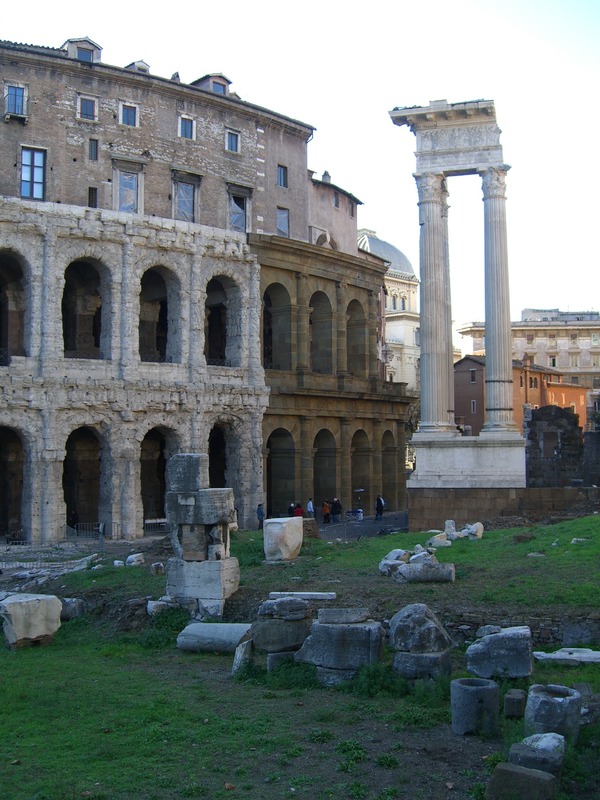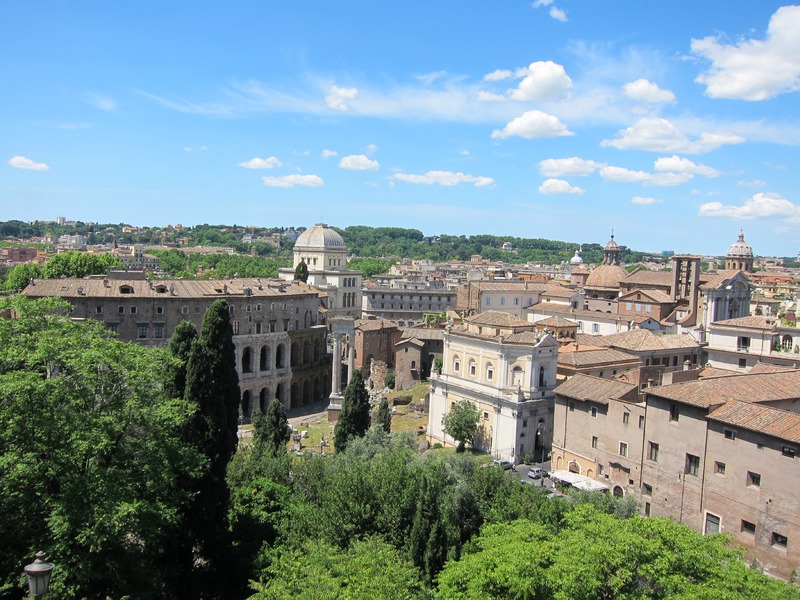Visibility & Accessibility

Theatre of Marcellus, detail of relationship with nearby Temple ruins.

Theatre of Marcellus, deatil of its visibility throughout the city of Rome.
The height, grandeur, and accessibility of the theater made it memorable to Roman citizens.1 Its proximity to the Temple of Apollo and other places of entertainment meant that it was frequently encountered. Additionally, the process of entering was new and vast. Augustus implemented a system of staircases and passages that encouraged those who came to fully enter the lower level and then begin the process of climbing to their appropriate seats. When exiting, there were multiple openings to the nearby road, allowing a crowd to stream out as a whole. As Ann-Kathrin Stock notes in “The Neuroscience of Memory,” the process of movement would have implanted memories of theatrical events in the heads of those who came, and would have reminded those who returned.2
______________________________________________________________________________
1 Amanda Claridge, Judith Toms, and Tony Cubberley, Rome: An Oxford Archaeological Guide (Oxford: Oxford University Press, 2010), 275.
2 Ann-Kathrin Stock et al., “The Neuroscience of Memory,” Memory in Ancient Rome and Early Christianity (Oxford: Oxford University Press, 2016), 369- 392.